Background

The Cotton, Textile and Apparel (CTA) industry is remains largely labor-intensive and employs both semi-skilled and un-skilled workers and hence a key contributor to rural livelihoods. Specifically, about 200,000 households and an estimated 40,000 farmers rely on proceeds from cotton growing.
The value chain includes cotton production, ginning, spinning, and weaving, apparel production and output sales and marketing.
Export Processing Zone (EPZ)-based manufacturers employ 52,000 people in the related apparels sub-sector of the cotton industry of which about 21,000 people are formal workers.
Major inputs include fibers (natural/man made), dyes, chemicals, yarns, threads, fabrics, utilities such as water, electricity and fuel, machinery and skilled and semi-skilled labor. Cotton growing in Kenya is mainly undertaken by small-scale farmers.
Interventions by the Government under the Third Medium Term Plan (MTP III) are bearing fruit. Policy reviews and legislative changes have improved the cotton growing ecosystem alongside the revival of Rivatex.
Among the key policy interventions was the introduction of the hybrid BT cotton variety, which has been genetically modified to produce a natural pesticide to combat pests, including African bollworm, which causes the greatest damage to farmers.
By planting BT cotton, farmers are seeing huge savings in cost of pesticides to control pests, leading to more earnings and higher yields. BT cotton is genetically enhanced by incorporating a gene derived from soil-dwelling bacteria.
With the assurance of a ready market by Rivatex, more farmers have been encouraged to increase cotton production. Following Government investment in Rivatex, the factory now has the capacity to consume 10,000 bales of cotton and is committed to buying all the locally planted crop.
A Government directive also requires state agencies to buy locally tailored fabrics.
Ginneries in Embu and Kirinyaga that were long-dormant now have a new lease of life.
The revival of cotton is creating employment in the textile sector and is expected to eventually reduce the influx of second-hand clothes also known as Mitumba.
The Government has already trained 50,000 youths and women in the production of the crop and established five million square feet of industrial sheds. This is expected to increase revenue from KSh3.5 million to KSh200 billion, create 500,000 cotton-related jobs and other 100,000 from the apparel sector by 2022.
Farmers in Mwea have harvested more cotton than previously at the rate of three times the conventional varieties with a shorter maturity period of between 130 to 180 days. Whereas average yields from the conventional cotton seed are 250kgs per acre, BT cotton yields average 7000kgs per acre.
Increased cotton production will spur the manufacturing sector through the provision of raw materials for the cotton value chain, including ginners, spinners, textile mills and apparel manufacturers, and create jobs for youth and women.
Annual local demand for cotton is 140,000 bales with a potential to grow to 260,000, yet the industry is producing a mere 21,000 bales annually. The commercialisation process started in 2011 culminating in a conditional approval from National Biosafety Authority in 2016 to Monsanto Company who owns the BT technology.
The National Environment Management Authority (NEMA) gave Monsanto a clearance certificate after conducting an environment impact assessment (EIA).
A 12-member taskforce set up by the ministries of Agriculture and Industrialisation Trade and Enterprise Development selected nine sites for national performance trials of BT cotton at Bura, Katumani, Mwea, Perlera, Kampi ya Mawe, Matuga, Kibos, Alupe and Barwessa.
In addition to higher yields, the industry benefits from improved cotton quality and export revenues.
In Homa Bay County farmers are reinvesting in cotton through their co-operative society and have acquired land to put up a modern warehouse and office and eventually a new cotton ginnery.
National Agriculture and Rural Inclusive Growth Project (NARIGP), supported the Cotton Cooperative Union to by the 2.5-acre land in Magare Village within Homa Bay town.
A similar revival is ongoing in the Kerio Valley in Baringo County following the signing of an MOU between the county and the Moi University-owned Rivatex. Farmers there are setting up a cooperative to deal directly with the buyers and eliminate middlemen
Farmers in the area, which is classified as semi-arid, would have greatly benefited from the Kimwarer and Arror dams whose construction was halted due to alleged corruption.
The Government established one thousand cotton demonstration farms in 23 cotton-growing counties ahead of the commercialisation of BT cotton.
Each demonstration farm was to train at least 40 farmers and create a pool of 40,000 cotton farmers as catchment for BT cotton with a target of 200,000 acres under BT cotton cultivation by 2022 hence creating over 2,500 jobs for Kenyans along the value chain.
This is going in tandem with the strengthening of smallholder farmers’ cotton development organisations’ governance and leadership capacities in their co-operatives, modernisation of cotton ginneries and establishment of new ones to enhance value addition.
For the programme to succeed, farmers are being encouraged by the Co-operative Department to form co-operative societies so as to enjoy economies of scale.
Kenya was the seventh country in Africa to adopt the BT cotton after South Africa, Sudan, Ethiopia, Malawi, Nigeria and Eswatini.
Commercial farming of BT Cotton would have been impossible without the lifting by the Cabinet of a Government ban for importation of GM foods imposed in 2012.
The first trials on the crop were carried out in 2001 at then Kenya Agricultural Research Institute (KARI), now Kenya Agricultural Research and Livestock Organisation (KARLO), Mwea Centre.
Increased cotton production will spur the manufacturing sector through provision of the much-needed raw material for the cotton value chain, including ginners, spinners, textile mills and apparel manufacturers while creating jobs for the youth and women.
Overall, this will improve rural incomes and reduce poverty while contributing to the realisation of the Big 4 Agenda in respect to manufacturing.
Among the key drivers of the manufacturing sector under the Big Four agenda is cotton and textiles which makes the commodity as a strategic crop for communities in the marginal areas and mainly grown in smallholder farms.
Other envisaged measures include, buying domestically grown cotton, improving governance in the import rules for textile products to cushion local producers and providing incentives to investors to build modern ginneries and textile manufacturing plants.
Once the Fiber Crops Development Authority Bill becomes law, the cotton industry will be even more invigorated. It will allow the Government to promote and market fibre crops and products meaning that the cotton, textile and apparel subsectors will be unstoppable.
Globally, 15 countries are currently growing GMO cotton covering an area of 24 million
hectares. Kenya is the latest entrant joining other African countries namely, eSwatini.
Key cotton industry inputs
Major inputs include fibres (natural and man-made), dyes, chemicals, yarns, threads, fabrics, utilities such as water, electricity and fuel, machinery, and skilled and semi-skilled labor.
Annual lint production
This currently stands at only about 20,000 bales.
Cotton ginning
Ginning separates seed cotton into lint and cotton seeds. Ginneries are a focal point in the cotton industry and their location, efficiency and organisation are critical to it. The ginner’s objective is to produce lint of satisfactory quality and to gin the cotton with minimum effect on fiber spinning quality. There are 24 ginneries in the country, with an installed capacity of approximately 140,000 bales annually. Out of the 24 registered ginneries, only about 10 ginneries are currently operational.
Textile mills and value addition
Revival of Kenya’s leading textile factories among them Rivatex, Thika Cotton Mills and Ken Knit is a deliberate and sustained Government strategy aimed at benefitting cotton farmers, growing local industries and creating jobs for the youth.
Cotton farmers in Kerio Valley in Elgeyo Marakwet county signed a deal with Rift Valley Textiles (Rivatex) East Africa Limited in 2019 for the factory to buy their produce, providing them with a guaranteed market and income and cutting out exploitative middlemen.
Rivatex was also to supply the 300 farmers with certified disease-resistant and high yielding BT cotton seeds. The Moi University-owned textile miller penned a memorandum of understanding with the administration of the Kericho county government.
This will see Rivatex supply farmers through their co-operative societies with certified cotton seeds and work with the county government on training and research.
The company undertook a KSh6 billion upgrade in 2019 as it targeted regional and international markets. The upgrade raised its capacity from 10,000 bales of cotton per day to 100,000 bales.
Rivatex used loans from the National Treasury and Government of India to replace obsolete machinery and is under contract by several state agencies to produce uniforms including the National Police Service, hospitals and the Geothermal Development Company among others.
Government policy for reviving the cotton and textile industries includes making Nakuru County a key textile hub in East and Central Africa, and the recent elevation of Nakuru to city status will only improve its attractiveness for potential investors.
Nakuru County is already home to a host of textile firms, including Bedi Investments Limited, Trendy Links Limited Spin-Knit Limited and Nakuru Industries Limited. The county government is also seeking investors to set up apparel and textile factories in the Naivasha Special Economic Zone.
In Kiambu County, Thika Cloth Mills has been reaching out to farmers in Machakos County to revive cotton growing in the arid Yatta and Masinga sub-counties. The farmers have signed a memorandum of understanding with TCM that will see the latter supply them with free seeds, fertilisers and pesticides and has already begun buying their cotton.
Plans are also underway to revive Mount Kenya Textiles (Mountex) in Nanyuki and Kisumu Cotton Mills (Kicomi) with the cost initially put at Sh1 billion. The two can create at least 7,000 jobs between them.
Kisumu National Polytechnic is among institutions benefiting from a World Bank KSh1.3 billion grant to become a centre of excellence for training in textile technologies in partnership with other technical and vocational training institutions to support the cotton industry value chain. This is under the under the World Bank’s East Africa Skills for Transformation and Regional Integration Project (EASTRIP).
The idea is to work with all parties along the value chain, including farmers, small and medium enterprises, technicians and researchers to make the sector vibrant once again while making textile products that meet international standards.
With a planned Special Economic Zone in the pipeline for the city of Kisumu, the institution has also signed a memorandum of understanding with Rivatex East Africa Limited.
For county governments, Kitui County Textile Company (KICOTEC) which is owned by the County Government of Kitui has set the pace, creating much needed jobs and market for the cotton industry in the county.
KICOTEC cashed in on a National Government directive requiring government agencies to buy locally made fabrics and apparel to snag a lucrative multimillion-shilling contract to tailor government uniforms for chiefs and their assistants countrywide.
It then followed this up with a certification from the Kenya Bureau of Standards (KEBS) to produce personal protective equipment (PPE) personal protective equipment for all public hospitals in the face of the COVID-19 pandemic. These included coveralls and masks which are essential for healthcare workers.
Textile mills convert fibres to fabrics through spinning, weaving/knitting and fabric finishing. Yarn Spinning: Cotton lint among other fibers goes through spinning to produce yarn. The yarn is then weaved or knitted to produce different types of fabric. Only 15 out of 52 yarn mills are operational at 40-50 per cent of installed capacity. Yarn and thread output are sold in Kenya and exported to Uganda, Rwanda and Tanzania, among others.

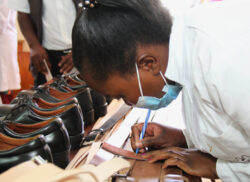
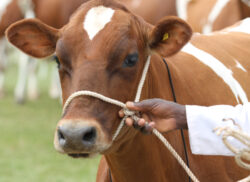

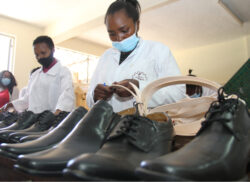

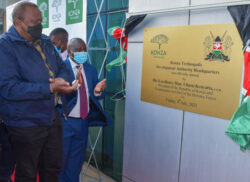

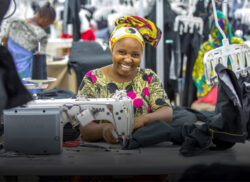
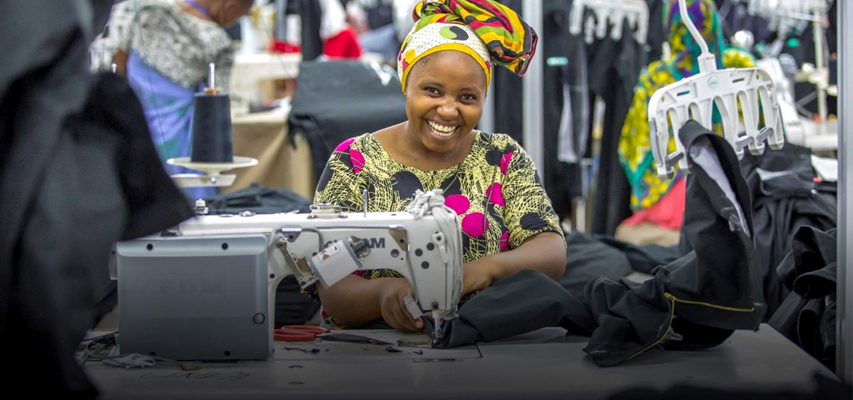
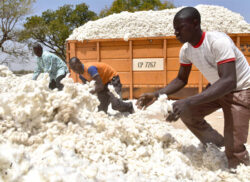

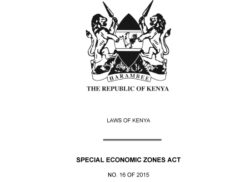

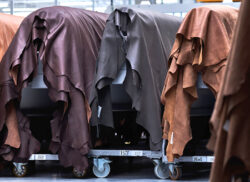

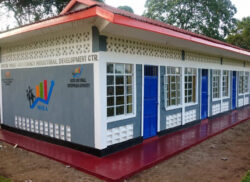
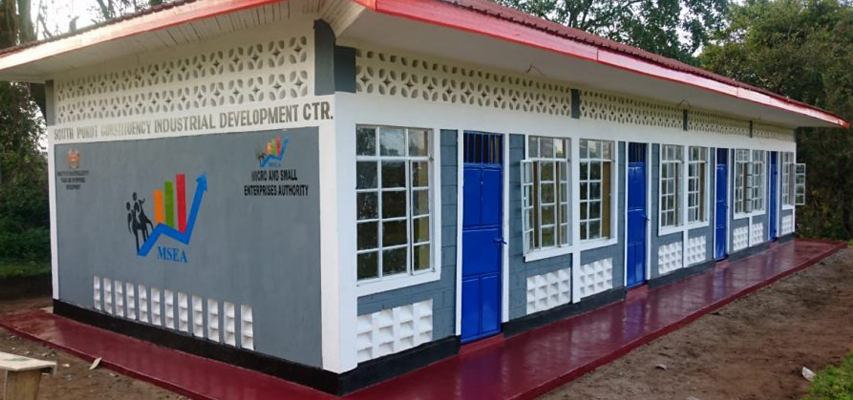

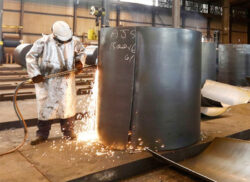
 The local steel industry remains heavily dependent on imported raw materials, as no local sources have been developed to date making the manufacture of steel locally quite expensive. Reducing this high import bill is possible if high quality steel can be produced more cheaply locally. The government’s strategies to promote the sector include readiness to facilitate investments in commercial exploitation of iron deposits in the country and setting up a Scrap Metal Council to regulate the scrap metal industry which is important in the sector.
The local steel industry remains heavily dependent on imported raw materials, as no local sources have been developed to date making the manufacture of steel locally quite expensive. Reducing this high import bill is possible if high quality steel can be produced more cheaply locally. The government’s strategies to promote the sector include readiness to facilitate investments in commercial exploitation of iron deposits in the country and setting up a Scrap Metal Council to regulate the scrap metal industry which is important in the sector.